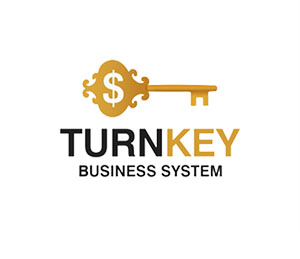
Understanding Leverage in Forex Trading
Leverage is one of the most powerful tools in Forex trading, allowing traders to control larger positions with a relatively small amount of capital.
While it can amplify profits, it also increases the potential for losses. This article will explore how leverage works, its advantages and disadvantages, and how to use it effectively to maximize your trading potential while minimizing risks.
While it can amplify profits, it also increases the potential for losses. This article will explore how leverage works, its advantages and disadvantages, and how to use it effectively to maximize your trading potential while minimizing risks.

Understanding Leverage in Forex Trading
What is Leverage in Forex Trading?
Leverage is a mechanism that enables traders to open positions larger than their actual account balance. It is expressed as a ratio, such as 1:50, 1:100, or even 1:500. The first number represents the trader’s capital, while the second number indicates the amount of borrowed funds provided by the broker. For example, with a leverage ratio of 1:100, a trader can control a 100,000 position with just 1,000 of their own money.When you use leverage, your broker lends you the additional funds needed to open a larger position. This borrowed capital allows you to access greater market exposure than your account balance would normally permit. However, it’s important to remember that while leverage can magnify profits, it also amplifies losses.
How Does Leverage Work?
Let’s break down how leverage works with an example. Suppose you have1,000 in your trading account and decide touse a leverage ratioof 1:100.This means you can control a position worth 100,000. If the market moves in your favor by 1%, your profit would be 1,000(1100,000), which is a 100% return on your initial investment. However, if the market moves against you by 1%, you would lose $1,000, wiping out your entire account balance.
This example illustrates the double-edged nature of leverage: it can significantly increase both gains and losses. Therefore, proper risk management is crucial when trading with leverage.
Advantages of Using Leverage
Increased Profit Potential
Leverage allows traders to maximize their profits by controlling larger positions with a smaller amount of capital. This is particularly beneficial in markets with small price movements, such as Forex.
Access to Larger Markets
With leverage, traders can participate in markets that would otherwise be inaccessible due to high capital requirements. This opens up opportunities to trade a wider range of currency pairs and other financial instruments.
Efficient Use of Capital
Leverage enables traders to allocate their capital more efficiently. Instead of tying up large amounts of money in a single trade, traders can spread their capital across multiple positions.
Risks of Using Leverage
Amplified Losses
Just as leverage can increase profits, it can also magnify losses. A small adverse market movement can result in significant losses, potentially exceeding your initial investment.
Margin Calls and Liquidation
If the market moves against your position and your account balance falls below the required margin level, your broker may issue a margin call, requiring you to deposit additional funds. Failure to meet the margin call can lead to the liquidation of your positions.
Emotional Stress
Trading with high leverage can be emotionally taxing, as even small market fluctuations can have a significant impact on your account balance. This can lead to impulsive decision-making and increased stress levels.
Choosing the Right Leverage Ratio
Selecting the appropriate leverage ratio is a critical decision for any trader. Here are some factors to consider when choosing leverage:Risk Tolerance
Your risk tolerance plays a key role in determining the right leverage ratio. Conservative traders may prefer lower leverage (e.g., 1:10 or 1:20), while aggressive traders may opt for higher leverage (e.g., 1:100 or 1:200).
Trading Strategy
Different trading strategies require different levels of leverage. Scalpers and day traders may use higher leverage to capitalize on small price movements, while long-term investors may prefer lower leverage to minimize risk.
Market Volatility
Highly volatile markets may require lower leverage to manage risk effectively. In contrast, less volatile markets may allow for higher leverage ratios.
Experience Level
Beginner traders should start with lower leverage until they gain more experience and confidence. As you become more proficient, you can gradually increase your leverage ratio.
Risk Management Strategies for Leveraged Trading
Effective risk management is essential when trading with leverage. Here are some strategies to help you manage risk:Use Stop-Loss Orders
A stop-loss order automatically closes your position at a predetermined price level, limiting your losses. This is especially important when trading with high leverage.
Diversify Your Portfolio
Avoid putting all your capital into a single trade. Diversifying your portfolio can help spread risk and reduce the impact of adverse market movements.
Monitor Margin Levels
Keep a close eye on your margin levels to avoid margin calls. Ensure that you have sufficient funds in your account to cover potential losses.
Avoid Over-Leveraging
While high leverage can increase profits, it also increases risk. Use leverage cautiously and avoid taking on more risk than you can afford.
Common Mistakes to Avoid When Using Leverage
Over-TradingExcessive trading can lead to poor decision-making and increased risk exposure. Stick to your trading plan and avoid impulsive trades.
Ignoring Risk Management
Failing to implement proper risk management techniques can result in significant losses. Always use stop-loss orders and manage your position sizes carefully.
Chasing Losses
Trying to recover losses by taking on higher leverage or larger positions can lead to even greater losses. Stay disciplined and stick to your trading strategy.
Lack of Education
Trading with leverage requires a solid understanding of how it works and the risks involved. Take the time to educate yourself before using leverage in your trades.
Practical Examples of Leverage in Action
Let’s look at a practical example to illustrate the impact of leverage. Suppose you have5,000in your trading account and use a leverage ratio of 1:50.This allows you to control a position worth 250,000.
If the market moves in your favor by 1%, your profit would be 2,500(1250,000), representing a 50% return on your initial investment.
However, if the market moves against you by 1%, you would lose $2,500, which is 50% of your account balance.
This example highlights the importance of using leverage responsibly and managing risk effectively.
Conclusion: Leverage as a Double-Edged Sword
Leverage is a powerful tool that can significantly enhance your trading potential, but it comes with inherent risks. By understanding how leverage works, choosing the right leverage ratio, and implementing effective risk management strategies, you can use leverage to your advantage while minimizing potential losses.Whether you’re a beginner or an experienced trader, it’s essential to approach leveraged trading with caution and discipline. Remember, the key to successful trading lies not in maximizing profits but in managing risk. Use leverage wisely, and it can become a valuable asset in your trading arsenal.
#Forex #Leverage #TradingTips









Report
My comments